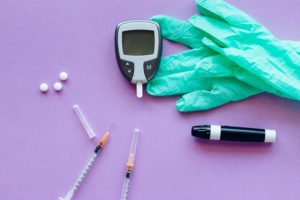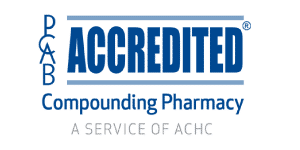What is Sublingual Medication?
Sublingual medication can be defined as a type of medication that is placed under your tongue, and from there it is absorbed into your bloodstream. Additionally, sublingual medications are available in tablet form and look like their oral counterparts. However, they’re not swallowed in the same manner as oral medications.
What are the Drawbacks of Oral Medication?
Traditional oral medicines are taken by swallowing a pill or tablet, which gets digested and absorbed through the lining of the gastrointestinal system and into the smallest blood vessels of the circulatory system that reside there.
Medication which is swallowed has to be capable of withstanding the highly acidic environment in the stomach, pass through the cells lining the intestines, and resist filtration or elimination through the liver before providing relief to the body.
Many medications cannot withstand these harsh environments, thereby decreasing the potency and efficacy of the medication. Also, the potency of a few oral medications may be negatively affected by different food and medicines already present inside the stomach.
What are the Advantages of Compounding Sublingual Medications?
1. Quick absorption
Sublingual medications are placed under the tongue and get directly absorbed into the body compared to oral medication that needs to be swallowed, digested, and absorbed through the gastrointestinal system. Sublingual medications dissolve rapidly at the mucous membranes beneath the tongue and enter directly into the tiny blood vessels beneath. From those capillaries, they enter the bloodstream quickly compared to oral medications.
2. Higher Potency
Oral medications have lower potency because of exposure to stomach acids and liver filtrations. In contrast, sublingual medications bestow the entire quantity of medication directly into the bloodstream without having to undergo liver metabolism. As a result, doctors can prescribe smaller dosages that are guaranteed to attain their intended results. Compounding pharmacies can make custom-based sublingual medications as per individual body needs, making them more effective than oral medication.
3. Reduced Interaction with Other Medications and Foods
Sublingual medication is administered and absorbed from under the tongue. Because it bypasses the stomach, it does not interact with food and other medications already present in the stomach before absorption. Sublingual medication does not cause gastrointestinal irritation like some other oral medications.
4. Ease of Administration
People who have trouble swallowing oral tablets and pills can use sublingual medications instead. In fact, sublingual medication doses can be consumed and absorbed easily from under the tongue. Also, Oral tablets are ideal for administration in patients who are unconscious and unable to swallow pills and tablets.
Sublingual Medication Best Practices:
Follow these steps for successfully administering sublingual medication.
1. Drink Plenty of Water
It is highly recommended to drink plenty of water about ten to fifteen minutes before placing a sublingual tablet. This ensures that you produce an adequate quantity of saliva necessary to dissolve the tablet.
2. Place the Pill in the Right Area of Your Mouth
When placing the tablet in the mouth, check whether the pharmacist’s or doctor’s instructions include sublingual or buccal (cheek) placement. Place the tablet in the correct area and wait for it to dissolve.
3. Avoid Interfering with Absorption
Avoid brushing your teeth immediately after placing sublingual medication in your mouth. Also, do not smoke for 2 hours before and after taking your medication, as this can prevent the mucous membranes in your mouth from properly absorbing the medication.
4. Avoid Washing Away the Medication
After the tablet has dissolved, avoid eating or drinking water or juice for at least 30 to 45 minutes. Consumption of food or liquid can wash away some part of your dose, resulting in low potency and efficiency.
5. If You Forget to Take Your Medication
Most of the medicines can be taken within a time span of 1-2 hours if you forget to take a dose. However, some medications adhere to a stricter schedule. Get in touch with your doctor if you’ve forgotten to take your medication.
What are the Different Forms of Sublingual Medication?
Sublingual medication for podiatry, pain management, sexual wellness, weight loss, etc. Additionally, can be easily prepared by a compounding pharmacist for all types of diseases and illnesses. Let’s look at the different forms of sublingual medication.
1. Sublingual Tablets
Sublingual tablets are shaped like traditional oral medications and are frequently delivered in pill bottles or blister packs. Also, they are placed under the tongue and are convenient for administration.
2. Sublingual Films
Medications can be converted into a thin, paper-like film. This thin, paper-like film dissolves on the tongue and is quickly absorbed into your bloodstream. Example: Suboxone.
3. Sublingual Sprays
Sublingual medication can be sprayed on the tongue. Also, some human and veterinary drugs are dispensed in this form.
4. Sublingual Drops
Sublingual liquids are designed in special formulations as concentrated solutions which are then administered in the form of drops under the tongue. Example: Nicocodeine cough preparations.
The administration of medicine in the form of sublingual liquids can offer a desirable alternative to the more common and commercially available oral medication forms. Depending upon the nature of the disease and illness, a compounding pharmacist can work with you and your doctor to custom formulate the medications in sublingual form.





